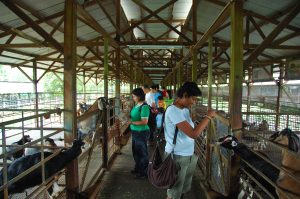Singapore: Making Space for Farming
October 16, 2022

16 October is World Food Day, featuring food security as a global concern. Although Singapore is not a country typically associated with agriculture, it is actually an intriguing case for the study of smallholders and their persistence.
In ‘Singapore: Making Space for Farming’ (in Asian Smallholders in Comparative Perspective (2019)), Ms Sakunika Wewalaarachchi (NUS Lee Kuan Yew School of Public Policy) and Associate Professor Eric Thompson (NUS Sociology and Anthropology) examine the social and governmental forces through which agriculture has persisted in modern Singapore. Particular attention is paid to smallholdings, which are farms that are limited in some respects (such as by the leasehold duration and size of the farmland).
Perhaps to many people’s surprise, Singapore’s agricultural industry had remarkable achievements in the early days, outperforming British colonisers and feeding the nation during the acute food shortages in WWII. Even in the early days of Singapore’s independence, the growing local demand and state funding made local agriculture flourish. Modernisation of Singapore’s agriculture industry started in the mid-1980s, when the national priority was switched from self-sufficiency to accumulation of wealth and surplus value by using science and technology.
In this spirit, the state gradually phased out family farms. The local agriculture sector was repositioned to attract investment opportunities for research and development in agrotechnology. Working as a farmer was branded as inferior. Nationwide resettlement programmes were also initiated to earmark rural farmers to the urban region. Although they received compensation either in the form of public housing or new farmland, the area was often smaller than what they had previously. Moreover, the introduction of foreign employees also led to a decline of family farms.
On the other hand, the state has been promoting the use of technology to maximise the productivity of local farms whilst minimising the input needed. So far, $63 million has been pledged to fund local farms. Authorities are also active in facilitating collaboration between local farms and supermarkets to enhance marketing of local produce. Quarterly farmers’ markets are also hosted to engage in public outreach and publicise local produce. That said, the authors argue that the government’s narrow focus on maximising productivity precludes other socially significant but non-commercial modes of employing Singapore’s farms, such as for education and ecotourism.
The article also pointed out challenges for smallholdings. The state leases of farmland are short, and renewal is precarious. The government’s communication to the farmers regarding lease duration also lacks overall transparency and consistency. Ironically, although the state tends to grant leases to those who invest in farming innovations, without assurance that they can run the farm long enough to make a financial return on their investment, many farmers are afraid of making long-term investments.
Going forward, while the authors recognise the increasing popularity of urban farming, they reckon that Singapore’s smallholders will still be directed by the state to bolster food security and develop high-value exports. The state’s understanding of local farms’ role in the nation will effectively shape what farms may achieve in the future.
Read the chapter here: https://www.degruyter.com/document/doi/10.1515/9789048540204-009/html
